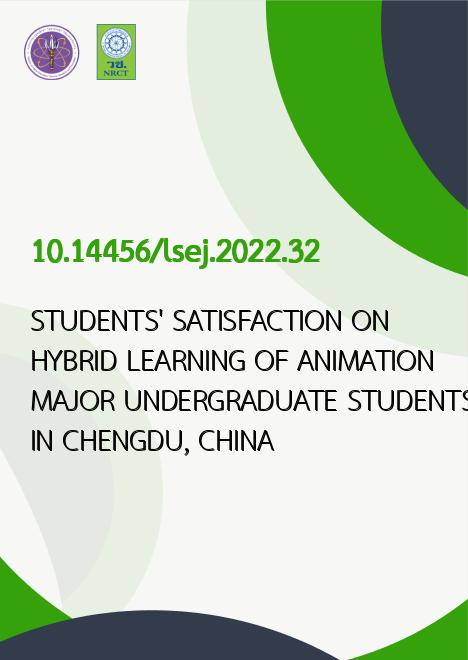
|
STUDENTS' SATISFACTION ON HYBRID LEARNING OF ANIMATION MAJOR UNDERGRADUATE STUDENTS IN CHENGDU, CHINA |
|---|---|
| รหัสดีโอไอ | |
| Creator | Limei Niu |
| Title | STUDENTS' SATISFACTION ON HYBRID LEARNING OF ANIMATION MAJOR UNDERGRADUATE STUDENTS IN CHENGDU, CHINA |
| Contributor | Athipat Cleesuntorn |
| Publisher | Pibulsongkram Rajabhat University |
| Publication Year | 2565 |
| Journal Title | Life Sciences and Environment Journal |
| Journal Vol. | 23 |
| Journal No. | 2 |
| Page no. | 422-436 |
| Keyword | Students' satisfaction, Hybrid learning, Animation major, Undergraduate student |
| URL Website | https://ph01.tci-thaijo.org/index.php/psru/index |
| Website title | Life Sciences and Environment Journal |
| ISSN | 2773-9201 |
| Abstract | The study was designed to explore factors influencing the satisfaction of animation undergraduates from Chengdu universities with hybrid learning. First, the conceptual framework in the study was based on three-tier use the model (3-TUM) and the information systems (IS) success model, including Self-efficacy (SE), System quality (SYQ), Information quality (IQ), Service quality (SQ), Perceived value (PV) and Satisfaction (SAT). It also presented relationships between influencing factors in the model. The researcher took an approach of judgement and quota samplings to verify the model by drawing 497 animation undergraduates from three public universities in Chengdu for quantitative research, with questionnaires to collect data. Second, confirmatory factor analysis (CFA) and structural equation model (SEM) were employed for data analysis, including goodness of fit, validity and reliability of structure. The criterion for model fit index was CMIN/DF<3.00, GFI≥0.90, AGFI≥0.80, RMSEA<0.05, CFI≥0.90, NFI≥0.90, TLI≥0.90. Model fit indexes of the adjusted CFA and SEM are within such standards. The above analysis contributed to the extent of influencing relations between various factors: service quality had the biggest positive effect on animation undergraduates’ satisfaction with hybrid learning with standardized path coefficient value of 0.429 (t=9.058***) and had the minimal impact on perceived value as marked by standardized path coefficient being 0.182 (t=3.962***). Perceived value has a direct implication for satisfaction, as evidenced by the standardized path coefficient of 0.275 (t=6.357***). Self-efficacy had a positively strong implication for students’ satisfaction with hybrid learning, which served as the second-leading factor influencing satisfaction with a standardized path coefficient of 0.379 (t=9.398***). Meanwhile, students’ satisfaction with hybrid learning was influenced by information quality and system quality, with the standardized path coefficient of 0.316 (t=8.128***) and 0.264 (t=6.053***) respectively. The study revealed that we need to take into account factors influencing students’ satisfaction with hybrid learning in ways that make their learning more enjoyable. Learning atmosphere for hybrid learning must be refined for better effect and satisfaction. |